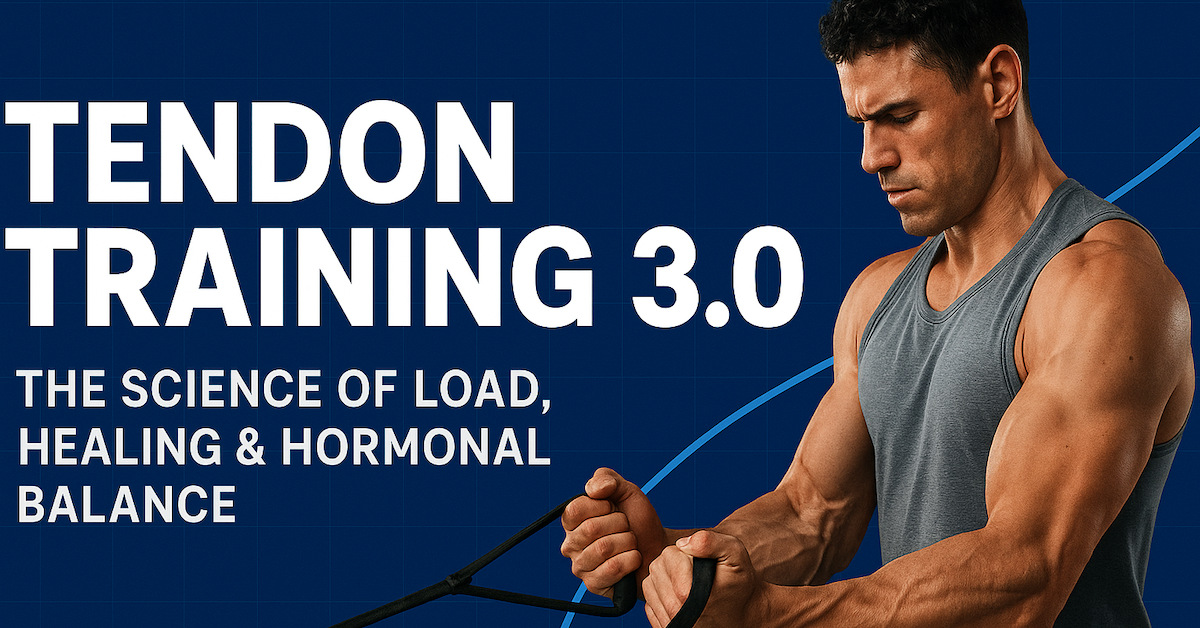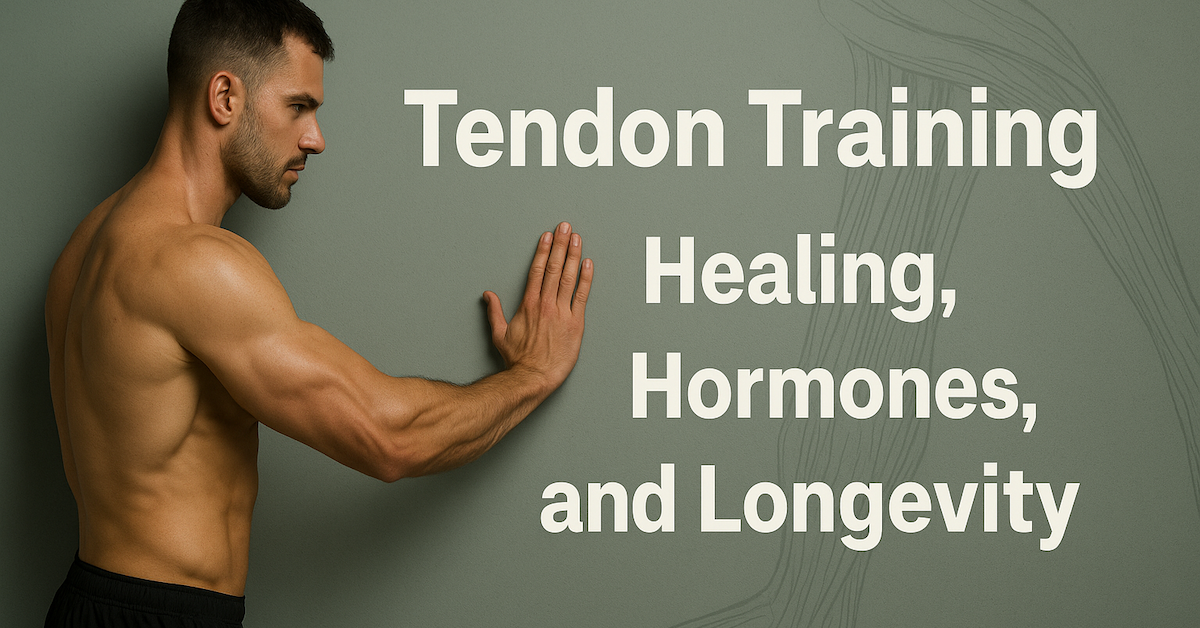Most athletes train muscles. The smart ones train tendons.
The problem? Tendons don’t give you warning signs. There’s no such thing as delayed-onset tendon soreness. One day you feel fine — the next day, something pops. New research led by Professor Keith Baar, one of the world’s leading experts in tendon biology, reveals how tendons truly adapt — and it changes everything about how we should train.
🎥 Watch the Full Interview with Dr. Keith Baar
Before diving into the protocol, I highly recommend watching this conversation, where these concepts were discussed in depth:
The Real Culprit Behind Tendon Injuries: Jerk
Most tendon injuries aren’t caused by heavy loading — they’re caused by jerk, the rapid change in acceleration. Think kipping, snapping out of the bottom of a pull-up, bounce reps, or suddenly reversing direction. That explosive transition sends shock through the tendon before the muscle can react.
- High jerk + fatigue = tendon rupture
- Static positions can be safer — if controlled
- But once fatigue sets in, the “strong region” of the tendon can no longer shield the weaker region, and that’s when tears occur
Why Tendons Are Silent — and Dangerous
Muscles warn you with soreness. Tendons don’t.
A tendon can be degenerating beneath the surface for months without pain. That’s why most ruptures seem to occur “out of nowhere.” Under a microscope, every ruptured tendon shows degeneration. The warning signs were there — you just couldn’t feel them.
The Breakthrough: Tendons Stop Responding After 10 Minutes
Here’s the critical discovery:
Tendons only respond to load for about 10 minutes. After that, the cells stop listening.
More loading doesn’t mean more adaptation — it just means more wear, fatigue, and potential injury.
✅ The Formula for Tendon Growth
- Static load (isometric, no bouncing)
- Light to moderate intensity (≈50% bodyweight or less)
- Total time: 10 minutes
- 1–2 sessions per day (6+ hours apart)
The 10-Minute Tendon Protocol
Goal: Build denser, stronger tendons using minimal effective dose
When: Separate session (morning or pre-training)
Load: Light — about 50% bodyweight or less
Method: 4–5 static holds that mimic your sport or risk positions
Example (Calisthenics / Strength Athlete)
| Hold | Duration |
|---|---|
| Planche Lean / Anterior Shoulder | 30 sec |
| Maltese Line / Supinated Bicep | 30 sec |
| Front Lever / Posterior Chain | 30 sec |
| Internal Rotation / Rotator Cuff | 30 sec |
➡ Rotate positions and repeat until 10 minutes total
➡ Beginners & rehab: stick to 30-sec holds
➡ Advanced: use 10-sec holds, increase rotations — NOT load
Rehab & Prehab: Same Method, Different Load
Phase 1 – Healing
- Pain-free 30-sec holds
- Very low load (≤25% BW)
Phase 2 – Rebuilding
- 30-sec holds
- Increase angles, moderate load (~50% BW)
Phase 3 – Performance Return
- Maintain morning protocol
- Resume heavy/dynamic training later in the day
Rule: If pain appears → regress intensity, never push through
Do Collagen Supplements Help?
Loading is the primary driver (≈95%). Nutrition offers the final 5%.
Optional Stack (30–60 min before session):
- 15g hydrolyzed collagen or gelatin
- 50mg Vitamin C
- With whey protein for mTOR activation (leucine → collagen synthesis)
Tendons absorb nutrients during loading via compression and decompression — timing matters.
Final Word: Train Tendons Like You Plan to Keep Them
Muscles can be rebuilt. Tendons cannot afford mistakes.
You don’t need hours — you need precision. Ten minutes a day can bulletproof your connective tissue, boost performance, and prevent the kind of injury that ends your season, or your career.

Injury Prevention Strategies for Aging Athletes
As athletes age, the risk of injury grows—and recovery takes longer. Injury Prevention Strategies for Aging Athletes reveals proven methods to help you stay strong, resilient, and active for years to come. In this 60-minute webinar, John Paul Catanzaro shares practical tips you can use immediately to reduce injury risk both on the field and in the gym.

Tendon Training 3.0: The Science of Load, Healing, and Hormonal Balance
If you’ve followed our tendon training series so far, you know that Dr. Keith Baar’s research has reshaped how we

Tendon Training 2.0: Advanced Insights on Healing, Hormones, and Longevity
If you haven’t read Part 1 — The 10-Minute Tendon Protocol: How to Build Stronger, Injury-Proof Tissue — start there

Why METH Beats RICE for Injury Recovery: Science Finally Catches Up
Back in 2012, I introduced a controversial—but far more effective—approach to treating soft-tissue injuries. The acronym? METH, which stands for:
follow
Error: No feed with the ID 2 found.
Please go to the Instagram Feed settings page to create a feed.
